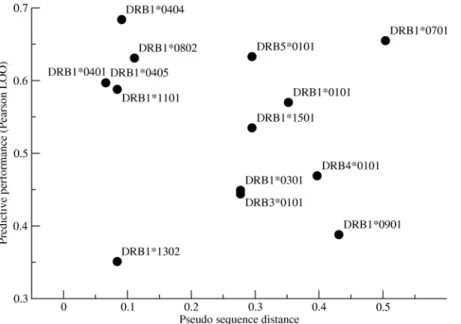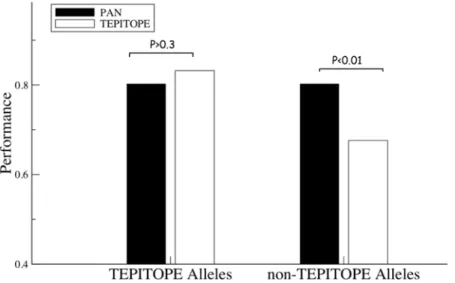Quantitative predictions of peptide binding to any HLA-DR molecule of known sequence: NetMHCIIpan.
Texto
Imagem




Documentos relacionados
MHC binding algorithms based on quantitative matrices yielded scores which correlated with binding affinity (20) like the TEPITOPE described for up to 25 distinct HLA-DR molecules
Consistent with this model, we observed that at restrictive temperature larval wing discs mutant for apkc ts showed significant mislocalisation of Pins in a subset of mitotic
(…) a escola não pode quedar-se na mera transmissão de conhecimentos (processo que se desenvolve, muitas vezes, de uma forma pouco instrutiva, limitando-se a um
There are convincing arguments that HLA-G has an im- portant role in regulating the immune system: (1) HLA-G is capable of binding to several types of receptors, some of which
Through HLA class I (HLA-A* and -B*) and class II (HLA- DRB1*) allele typing from the registry of volunteers (REDOME) of Bauru, São Paulo, we aimed to estimate the frequencies of
Na avaliação econômica de empreendimentos, além da análise de benefício-custo, é comum se estimar outros indicadores, pois estes possibilitam se fazer comparações
In this study we have developed a method to predict, using only sequence composition of the interacting proteins, the functional class of human TF binding partners to be (i) TF,
Seven peptide sequences predicted to bind to multiple human leukocyte antigen (HLA)-DR molecules were synthesised and tested with IFN-γ enzyme-linked immunospot (ELISPOT) assays
